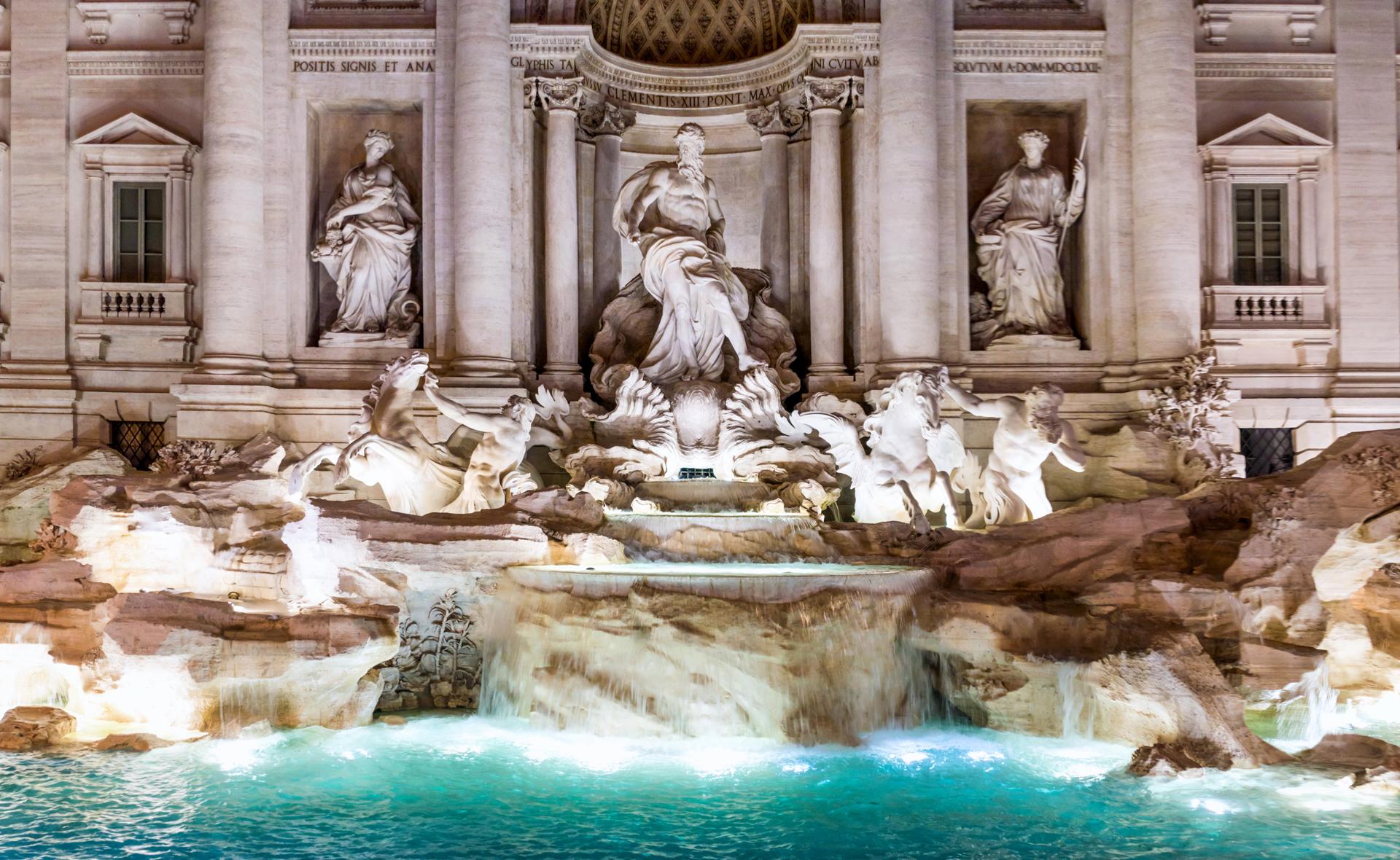One of the most famous monuments in Rome, which celebrates a play on water in a theatre of eternal beauty.

«The fountains are enough to justify a trip to Rome», said English poet Percy Bysshe Shelley. As you stroll through the alleys and tiny piazzas of the Eternal City, you may unexpectedly find yourself in front of the Trevi Fountain, the sight of which can only be considered extraordinary. Suddenly, the noise of the water invades our thoughts, while our vision is struck by the amazing brightness, the perpetual sparkle and statues that seem to come to life and emerge from every nook.
The marble and travertine fountain was designed by architect Nicola Salvi, who won the contest announced by Pope Clement XII in 1732, and it was completed in 1762 by Giuseppe Pannini in a sublime late Baroque style, with strong evocations of Bernini. The Trevi Fountain draws its water from the Aqua Virgo aqueduct built by Agrippa, the son-in-law and collaborator of Emperor Augustus, in the first century B.C.
It is a veritable theatre sculpted out of water that stages the story of Aqua Virgo through elegant allegorical figures, alluding to its beneficial effects. The central niche of the fountain features the Oceano statue by Pietro Bracci. The figure is driving a shell-shaped carriage pulled by two winged horses, one ferocious and the other placid, representing the sea, which is sometimes agitated and sometimes calm. The two smaller niches that flank the central one contain the statues of Salubrità (Health, to the left of Oceano) and Abbondanza (Abundance, to the right), the latter depicted supporting a large, overflowing cornucopia of fruits. Above, two reliefs depict Agrippa (on the left) approving the construction of the Aqua Virgo, and the young virgin (on the right) showing the soldiers where to dig to find the water sources, in keeping with the legend as passed on by Roman politician and writer Frontinus.
The upper facade is supported by four large corinthian columns, and the four allegorical statues placed here represent what is produced thanks to plentiful rainwater: the Abundance of fruit, Fertility of the field, Autumnal wealth and Lush gardens.
Finally, there is a great commemorative inscription between the two central statues. Pope Clement XII’s impressive heraldic coat of arms looms above this, supported by two winged figures representing Fame, created by Paolo Tenaglia. The fountain is rendered even more spectacular by the large quantity of details. Just think, it is possible to pick out 30 species of plants, along with numerous animals.
A fascinating detail not to be missed: if you look at the right side of the fountain, you will see a huge ornamental vase sculpted in the rock. It was made by the architect Nicola Salvi to block the view of the works from a barber whose shop was near the piazza, and who apparently did nothing but criticise the design of the fountain while it was under construction.
